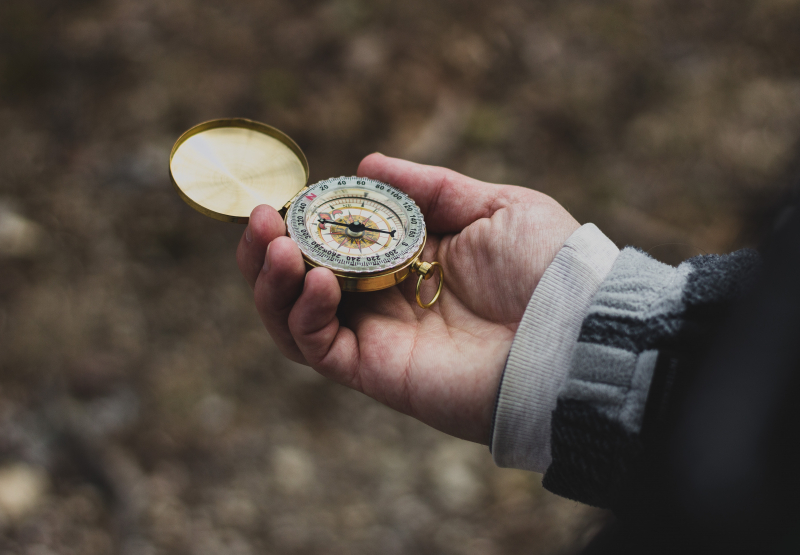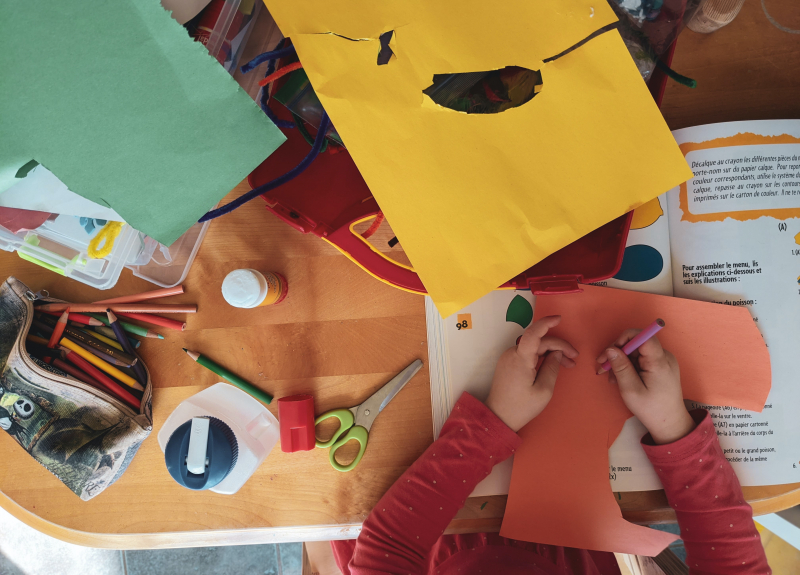Top 15 Best Personal Narrative Essay Outline
Narrative essays offer writers the opportunity to express personal experiences, often in a compelling and thought-provoking way. Crafting an effective personal ... read more...narrative essay requires a well-structured outline to guide the storytelling process. In this article, Toplist provides the best personal narrative essay outlines to help writers create engaging and impactful narratives.
-
I. Introduction
A. Set the Scene: Introduce a personal anecdote or experience that led to a difficult decision you had to make.
B. The Dilemma: Present the nature of the difficult decision and its significance in your life.
C. Thesis Statement: Articulate the emotional and psychological complexity entailed in making difficult decisions and their lasting impact.
II. Body- The Context of the Decision
A. Background: Provide necessary context regarding the circumstances that precipitated the difficult decision.
B. Stakeholder Perspectives: Discuss the varied perspectives and influencing factors that contributed to the complexity of the decision.
C. Emotional Turmoil: Highlight the emotional and mental struggle associated with the decision-making process.
- Weighing the Options
A. Considerations and Consequences: Delve into the different possible outcomes and the consequences associated with each choice.
B. Moral and Ethical Implications: Address any moral or ethical dilemmas that factored into the decision-making process.
C. Conflicting Priorities: Explore the conflicting priorities or values that need to be reconciled during the decision-making process.
- Taking Action
A. The Decision-Making Process: Describe how you navigated through the process of evaluating the options and arriving at a decision.
B. External Influence: Discuss any external influences or advice that played a role in shaping your decision.
C. The Moment of Choice: Capture the moment when the decision was made and its emotional weight.
- Facing the Consequences
A. Immediate Impact: Reflect on the immediate aftermath of making the difficult decision and its effects.
B. Acceptance and Adjustment: Discuss the process of coming to terms with the consequences and adapting to the new reality.
C. Lessons Learned: Highlight the insights and personal growth that emerged from facing the consequences of the decision.
- Resilience and Moving Forward
A. Coping Mechanisms: Share the strategies employed in coping with the aftermath of the decision.
B. Growth and Transformation: Reflect on how the experience led to personal growth and transformation.
C. Looking Ahead: Express how the difficult decision and its aftermath have shaped your perspectives and outlook on future challenges.
III. ConclusionA. Reflections and Resolutions: Reflect on the enduring impact of the difficult decision and the insights gained from the experience.
B. Empowerment and Resilience: Highlight the strength and resilience that emerged from navigating a challenging decision.
C. Final Thoughts: Conclude with reflections on the value of facing difficult decisions and the potential for growth and transformation that accompanies such experiences.

Image via Unsplash 
Image via Unsplash -
I. Introduction
A. Setting the Stage: Introduce a compelling travel experience that left a lasting impression on you.
B. Significance of Travel: Discuss the impact of travel on personal growth, cultural understanding, and emotional enrichment.
C. Thesis Statement: Emphasize the transformative power of meaningful travel experiences and their enduring influence.
II. Body- The Destination and Its Appeal
A. Location and Context: Provide an overview of the destination and the cultural, historical, or personal significance it holds for you.
B. Initial Impressions: Describe your initial feelings and expectations before embarking on the journey.
C. Anticipation and Excitement: Reflect on the emotional state and sense of anticipation as you prepare for the trip.
- Immersion in the Culture
A. Cultural Encounters: Share memorable interactions with locals, cultural festivities, or traditional practices that enriched your understanding of the destination.
B. Culinary Exploration: Discuss how the local cuisine and dining experiences served as gateways to the culture and community.
C. Learning and Adapting: Reflect on the lessons learned and the open-mindedness required to embrace a new cultural environment.
- Unexpected Discoveries
A. Serendipitous Moments: Recount chance encounters, surprising sights, or unplanned excursions that enhance the travel experience.
B. Personal Connections: Share stories of connections made with fellow travelers or locals that left a deep impact on you.
C. Epiphanies and Insights: Discuss any profound realizations or shifts in perspective that arose during the journey.
- Challenges and Resilience
A. Navigating Obstacles: Describe any challenges or setbacks faced during the travel experience and how they were overcome.
B. Resilience and Adaptability: Discuss the personal growth and resilience developed through overcoming travel-related obstacles.
C. Lessons Learned: Highlight the valuable lessons gleaned from navigating unforeseen challenges in an unfamiliar setting.
- Reflection and Transformation
A. Moments of Revelation: Delve into the transformative moments that reshaped your perceptions or beliefs during the journey.
B. The Impact on Identity: Discuss how the travel experience influenced your sense of self and outlook on the world.
C. Personal Growth: Reflect on the lasting impact of the travel experience and how it continues to shape your perspectives and choices.
III. Conclusion
A. Enduring Impact: Reflect on the enduring influence of the meaningful travel experience and its resonance in your life.B. Advocacy for Travel: Share the importance of meaningful travel and its potential to foster personal growth, cultural understanding, and global empathy.
C. Final Thoughts: Conclude with a reflection on the value of travel as a catalyst for personal enrichment and the embrace of diverse perspectives.

Image via Unsplash 
Image via Unsplash -
I. Introduction
A. Set the Stage: Introduce the setting and context of the situation where you got lost, creating a sense of anticipation.
B. The Incident: Briefly outline the circumstances that led to getting lost and the initial emotions it evoked.
C. Thesis Statement: Emphasize the significance of the experience and its impact on your perspective.
II. Body
- The Journey Begins
A. Setting the Scene: Describe the environment and the initial sense of adventure or purpose that characterized the beginning of the journey.
B. Companionship or Solitude: Discuss who you were with or if you were alone, and how this factor influenced the experience.
C. The Sense of Direction: Establish your initial confidence in navigating the path and the factors that contributed to this assurance.
- The Unexpected Turn
A. Signs of Disorientation: Describe the pivotal moment when it became evident that you were lost and the initial feelings of confusion or anxiety.
B. Efforts to Regain Direction: Recount the steps taken to attempt to find the way back or discover a route forward.
C. Emotional and Mental Response: Reflect on the internal turmoil and the array of thoughts and emotions that surfaced upon realizing being lost.
- Encounters and Discoveries
A. Chance Meetings: Share any encounters with strangers or fellow travelers that occurred while being lost.
B. Unforeseen Attractions: Discuss any unexpected sights, sounds, or experiences that emerged as a result of being off course.
C. Personal Reflections: Highlight the introspective moments that arose amidst the disorientation and how they influenced your mindset.
- Coping with Adversity
A. Emotional Resilience: Discuss the strategies used to maintain composure and cope with the fear or frustration of being lost.
B. Problem-Solving: Describe the practical measures taken to navigate the situation and mitigate the effects of being lost.
C. Lessons Learned: Reflect on the insights gained and the personal growth that emerged from confronting the challenge of being lost.
- Reconciliation and Resolution
A. Finding the Way Back: Recount the eventual successful navigation back to familiar territory or reaching the intended destination.
B. Reactions and Reflections: Express how the experience of being lost influenced your subsequent actions and perspectives.
C. Lasting Impact: Discuss the enduring effects of the experience on your outlook and decision-making in future challenges or unfamiliar situations.
III. ConclusionA. Reflection on the Experience: Summarize the key emotions, lessons, and realizations garnered from the experience of being lost.
B. Impact on Growth: Reflect on the transformative influence of the experience and its role in shaping your character.
C. Final Thoughts: Conclude with a contemplation on the profound value of confronting and overcoming challenges like getting lost, and the enduring impact it has on personal development.

Image via Unsplash 
Image via Unsplash -
I. Introduction
A. The Dream: Introduce the dream or aspiration that held personal significance and fueled your endeavors.
B. Context and Significance: Provide background on the nature of the dream and its emotional, professional, or personal importance.
C. Thesis Statement: Emphasize the transformative impact and enduring resonance of witnessing the realization of a cherished dream.
II. Body- Origin of the Dream
A. Inspirations and Aspirations: Discuss the origins of the dream and the influences that shaped the desire to see it come true.
B. Obstacles and Challenges: Highlight the initial hurdles or setbacks that might have initially seemed insurmountable.
C. Emotional Investment: Reflect on the emotional significance and personal investment in the dream's fulfillment.
- Pursuit of the Dream
A. Determination and Resilience: Describe the dedication, perseverance, and sacrifices made in pursuit of the dream. B. Support System: Discuss the role of mentors, friends, or family members who provided encouragement or guidance along the journey. C. Milestones and Achievements: Recount the significant milestones or achievements that marked the progression towards realizing the dream.
- The Turning Point
A. Moments of Doubt: Reflect on the moments of uncertainty and self-doubt encountered while striving towards the dream.
B. Signs of Progress: Describe the moments or events that signaled the impending realization of the dream.
C. Emotional Anticipation: Capture the mix of emotions experienced as the dream drew closer to becoming a reality.
- The Moment of Fulfillment
A. Actualizing the Dream: Share the events or circumstances that culminated in the realization of the cherished dream.
B. Emotional Euphoria: Express the overwhelming joy, relief, and gratitude experienced at the moment of the dream coming true.
C. Impact on Identity: Reflect on how the fulfillment of the dream influenced your sense of self and purpose.
- The Aftermath
A. Reflections on Fulfillment: Discuss the immediate aftermath and the emotional aftermath of seeing the dream materialize.
B. Adjusting to Reality: Address the transition from pursuing the dream to embracing its realization, and any unexpected challenges in the aftermath.
C. Lessons Learned: Highlight the insights and personal growth that emerged from the experience of having a dream come true.
III. ConclusionA. Enduring Impact: Reflect on the enduring influence of the realization of the dream and its role in shaping your character and outlook on life.
B. The Continued Journey: Discuss how the fulfillment of one dream has influenced your subsequent aspirations and pursuits.
C. Final Thoughts: Conclude with a contemplation on the profound significance of experiencing a dream come true and the lasting transformation it has imparted.

Image via Unsplash 
Image via Unsplash -
I. Introduction
A. Setting the Scene: Describe the anticipation and excitement leading up to the first day of kindergarten.
B. Background: Introduce the context of the experience, highlighting the significance of this milestone.
C. Thesis Statement: Emphasize the impact of this pivotal day on your early childhood and development.
II. Body- Farewell to Familiarity
A. Departure from Home: Illustrate the departure from the comfort of home and the journey to the kindergarten.
B. Mixed Emotions: Express the blend of nervousness, eagerness, and curiosity felt while embarking on this new chapter.
C. Initial Impressions: Share the first glimpse of the kindergarten and the surroundings.
- Meeting the Unknown
A. Introduction to New Faces: Describe the interactions with the teacher and classmates, focusing on the initial attempt to navigate these new social dynamics.
B. Exploration of the Classroom: Discuss the delight and wonder experienced while exploring the kindergarten environment.
C. Considering the Routine: Reflect on the structured activities and routines encountered during the first day.
- Overcoming Hurdles
A. Moments of Uncertainty: Discuss any challenges or moments of apprehension faced during the initial interactions with peers and teachers.
B. Coping Strategies: Describe the techniques used to adapt to the new environment and engage with the activities.
C. Comfort in Familiarity: Highlight the moments of reassurance and comfort experienced amid unfamiliarity.
- Discovering New Horizons
A. Engaging in Activities: Share the details of the activities, games, or learning experiences that captured your attention and interest.
B. Friendships Formed: Discuss the forging of early friendships and the bond shared with classmates.
C. Early Lessons and Insights: Reflect on the nascent lessons and insights gained from the first day of kindergarten.
- Shift in Perspective
A. Emotional Turbulence: Illustrate the fluctuations in emotions experienced throughout the day, from initial nerves to eventual comfort and excitement.
B. Glimpse of Independence: Discuss the early signs of independence and autonomy manifested during the day.
C. Lessons Learned: Share the personal growth and realizations that emerged from this transformative experience.
III. ConclusionA. Reflection on the Experience: Summarize the impact of this formative day on your early childhood and development.
B. Lasting Effect: Discuss how the experiences of the first day influenced subsequent experiences and outlook on learning.
C. Final Thoughts: Conclude with a contemplation of the significance of this pivotal day and its lasting impression on your journey of education and personal growth.

Image via Unsplash 
Image via Unsplash -
I. Introduction
A. Setting the Stage: Describe the anticipation and excitement leading up to the national club football tournament.
B. Background: Share the context of the event and its significance in the realm of sports in your country.
C. Personal Connection: Explain your involvement in the tournament and the emotions tied to the experience.
II. Body- Preparing for the Tournament
A. Training and Preparation: Discuss the rigorous training, practice sessions, and physical preparations leading up to the tournament.
B. Team Dynamics: Introduce the camaraderie among teammates, the challenges faced, and the support system within the team.
C. Anticipation and Expectations: Express the mix of nerves and excitement as the tournament approaches, as well as personal aspirations and goals.
- The Build-Up
A. Arrival at the Venue: Describe the atmosphere and energy as you arrived at the tournament venue, the sight of other teams, and the buzz of anticipation.
B. Opening Ceremony: Share the experience of the tournament's opening ceremony, the display of national pride, and the fervor of the participating teams and spectators.
C. Mental Preparedness: Reflect on the mindset and determination as the tournament commenced and the feeling of responsibility towards representing your club.
- The Action Unfolds
A. Matches and Performances: Discuss the intensity and adrenaline rush during the matches, the strategies employed, and the challenges faced against other skilled teams.
B. Team Efforts and Unity: Highlight the coordination, teamwork, and collective effort that contributed to your performance and the overall progress in the tournament.
C. Standout Moments: Share standout moments, such as crucial goals, impactful tackles, or pivotal saves that left a mark on your experience.
- Overcoming Adversity
A. Setbacks and Resilience: Discuss any setbacks or moments of adversity faced during the tournament, and the determination to bounce back from challenges.
B. Support and Encouragement: Reflect on the role of encouragement from teammates, coaches, and supporters in overcoming obstacles and staying motivated.
C. Lessons Learned: Share the lessons and insights gained from adversity and the impact on personal growth and character.
- Triumph and Reflection
A. Victories and Achievements: Reflect on the victories, advancements, and any milestones achieved during the tournament, and the emotions that accompanied these moments.
B. Sense of Accomplishment: Describe the feeling of personal fulfillment and pride in representing your club and contributing to the team's success.
C. Impact and Legacy: Discuss the lasting impact of the tournament on your perspective on sports, teamwork, and the broader significance of your journey.
III. ConclusionA. The Aftermath: Summarize the experience of participating in the national club football tournament and the immediate aftermath.
B. Resonance and Growth: Reflect on the enduring impact of the tournament on your athletic growth, mindset, and approach to future sporting endeavors.
C. Final Thoughts: Conclude with a contemplation on the profound significance of this sporting event and its lasting impression on your journey in sports and personal development.

Image via Unsplash 
Image via Unsplash -
I. Introduction
A. Engaging opening to seize the reader's attention.
B. Overview of the family tradition being explained.
C. Thesis statement: Introduce the tradition, its origins, and its contemporary significance.II. Body
- Origin and Development
A. Explanation of the historical background of the tradition.
B. Description of how the tradition took shape within the family.
C. Any specific events or influences that contributed to its development.- Tradition in Practice
A. Detailed depiction of how the tradition is carried out.
B. Inclusion of any special rituals, practices, or symbols associated with the tradition.
C. Personal experiences and emotions tied to participating in the tradition.- Significance and Impact
A. Reflection on what the tradition means to the family.
B. Discussion of how the tradition brings family members together.
C. Examination of the tradition's impact on family values, identity, and sense of belonging.- Adaptation and Evolution
A. Exploration of any changes or adaptations the tradition has undergone over time.
B. Insights into how the tradition has evolved with newer generations.
C. Discussion of the importance of preserving the tradition's core values while allowing for growth.- External Influence and Learning
A. Examination of any external cultural or societal influences on the tradition.
B. Reflection on the broader lessons or values imparted by the tradition.
C. Comparison of the tradition with external cultural practices or norms.- Passing the Tradition On
A. Exploration of how the tradition is passed down to younger family members.
B. Insight into the role of storytelling and education in perpetuating the tradition.
C. Reflections on the tradition's continuity across generations.- Contemporary Relevance
A. Discussion of the tradition's place in the modern family dynamic.
B. Exploration of the tradition's relevance in today's rapidly changing society.
C. Evaluation of how the tradition contributes to family well-being and cohesion.III. Conclusion
A. Summary of the tradition's origin, practice, and significance.
B. Closing reflections on the enduring importance and relevance of the family tradition.
C. Final thoughts on the value of preserving and cherishing familial customs and legacies.
Image via Unsplash 
Image via Unsplash - Origin and Development
-
I. Introduction
A. Engaging opening to depict the nature of the argument.
B. Introduction of the friend and the context of your relationship.
C. Thesis statement: Introduce the argument, its impact, and the resolution process.
II. Body- Context of the Argument
A. Description of the circumstances leading to the argument.
B. Nature of the disagreement and the emotions involved.
C. The dynamics of the relationship before the argument occurred.
- Building Tension
A. Details of the escalation and intensity of the argument.
B. Factors contributing to the heightening of emotions and conflicting viewpoints.
C. Impact of the argument on friendship and personal well-being.
- Resolution Approach
A. Discussion of the initial steps taken to address the conflict.
B. Communication strategies employed to initiate the resolution process.
C. Emphasis on the importance of mutual respect and understanding during conflict resolution.
- Dialogue and Understanding
A. Depiction of the conversation and dialogue during the resolution process.
B. Illustration of how listening and empathy played a role in resolving the conflict.
C. Moments of realization and shared understanding during the conversation.
- Finding Common Ground
A. Exploration of the common values and perspectives discovered during the resolution.
B. Identification of compromise and areas of agreement.
C. Reflections on the mutual desire to mend the friendship.
- Moving Forward
A. Discussion of the agreements and solutions reached.
B. Planning for the future and how the friendship was strengthened.
C. The new perspective gained and personal growth resulting from the resolution.
- Lessons Learned
A. Reflection on the insights gained from the conflict and its resolution.
B. Personal growth and a newfound appreciation for effective communication.
C. Insights into conflict resolution and relationship dynamics.
III. ConclusionA. Summary of the argument, the resolution process, and its impact on the friendship.
B. Closing reflections on the enduring importance of open communication and understanding in friendships.
C. Emphasis on the value of overcoming conflict and the lasting impact it had on the relationship.

Image via Unsplash 
Image via Unsplash -
I. Introduction
A. Setting the Scene: Introduce the anticipation and excitement leading up to the encounter with the celebrity or admired individual.
B. The Celebrity or Admired Figure: Briefly describe the significance of the celebrity or admired individual in your life and the impact they have had on you.
C. Thesis Statement: Emphasize the profound significance of the encounter and its lasting impression on your life.
II. Body- Anticipation and Excitement
A. Building Anticipation: Share the anticipation and preparations leading up to the meeting, capturing the emotional buildup.
B. Personal Connection: Discuss the personal reasons behind your admiration for the celebrity or admired individual, including their influence on your aspirations or beliefs.
C. Emotional Significance: Highlight the emotional significance of the impending encounter and its potential impact on your outlook.
- The Memorable Encounter
A. The Meeting: Describe the actual meeting with the celebrity or admired figure, capturing the sensory details and initial emotions.
B. Interaction and Connection: Elaborate on the nature of the interaction, including the exchange of words, gestures, or shared moments that left a lasting impression.
C. Emotional Impact: Reflect on the emotional impact of the encounter, including the overwhelming emotions, awe, or inspiration experienced in the presence of the admired individual.
- Shared Moments and Insights
A. Engaging Conversations: Discuss any meaningful conversations or insights gained during the encounter, sharing the impact of the admired individual's words or perspective.
B. Shared Values: Highlight any shared values or beliefs discussed during the interaction, emphasizing the resonance with the admired individual on a personal level.
C. Lessons Learned: Reflect on the valuable lessons or inspirations derived from the encounter and how they have influenced your personal growth or aspirations.
- Reflection and Resonance
A. Profound Impact: Reflect on the enduring impact of the encounter on your identity, values, and aspirations.
B. Personal Growth: Discuss how the meeting has contributed to your personal growth, empowerment, or newfound perspectives.
C. Continued Influence: Emphasize how the encounter continues to influence your choices, actions, and outlook on life.
- Beyond the Encounter
A. Gratitude and Appreciation: Express gratitude towards the celebrity or admired individual for the impact they have had on your life.
B. Sharing the Experience: Discuss how the experience has been shared with others and the reactions it evoked in your social circles.
C. Paying It Forward: Share your intentions to pay forward the inspiration and insights gained from the encounter by positively impacting others.
III. ConclusionA. Lasting Impressions: Summarize the enduring impressions and emotional resonance of the encounter with the celebrity or admired individual.
B. Personal Transformation: Reflect on the transformative impact of the encounter and its role in shaping your journey.
C. Final Thoughts: Conclude with a contemplation on the profound significance of meeting a celebrity or admired individual, and the lasting influence it has imparted.

Image via Unsplash 
Image via Unsplash -
I. Introduction
A. Setting the Stage: Establish the anticipation and excitement leading up to the moment of learning to ride a bike or drive a car.
B. The Significance: Briefly discuss the significance of this milestone in gaining independence and mobility.
C. Thesis Statement: Emphasize the transformative impact of learning to maneuver these vehicles and the enduring memories associated with the experience.
II. Body- Learning to Ride a Bike
A. Anticipation and Eagerness: Describe the eagerness and anticipation leading up to the first attempt at riding a bike.
B. Initial Struggles: Share the initial challenges and struggles faced during the learning process, including maintaining balance and coordination.
C. Breakthrough Moment: Highlight the pivotal moment of successfully riding the bike independently for the first time and the exhilaration it brought.
- Embracing the Open Road
A. Acquiring a Sense of Freedom: Discuss the newfound sense of freedom and excitement associated with being able to ride a bike around the neighborhood.
B. Exploring New Horizons: Share the adventures and explorations facilitated by the newfound ability to ride independently.
C. The Bike as a Companion: Reflect on the bike's role as a faithful companion in the journeys of childhood and the valuable life lessons learned through its presence.
- Learning to Drive a Car
A. Transition to Four Wheels: Describe the transition from riding a bike to learning to drive a car, capturing the mix of nervousness and excitement.
B. Lessons and Instructions: Discuss the formal learning process involved in acquiring the skills to drive a car, including lessons from an instructor or family member.
C. Initial Driving Experiences: Share the emotions and challenges experienced during the initial driving lessons and practices.
- Freedom on Four Wheels
A. The Thrill of Independence: Discuss the newfound sense of independence and autonomy accompanying the ability to drive a car.
B. Road Adventures: Share the adventures and experiences enabled by the ability to drive independently, from road trips to daily commutes.
C. Insightful Lessons: Reflect on the valuable lessons learned through the experiences of driving, including responsibility, awareness, and adaptability.
- Reflection and Growth
A. Personal Development: Reflect on the personal growth and empowerment attained through the learning processes of riding a bike and driving a car.
B. Resonating Memories: Discuss the enduring memories and emotional resonance associated with these key milestones in mobility.
C. Lasting Impact: Emphasize the lasting impact of these experiences on shaping your independence, confidence, and sense of agency.
III. ConclusionA. Enduring Significance: Summarize the lasting significance of learning to ride a bike and drive a car in fostering independence and mobility.
B. Personal Growth: Reflect on the transformative impact of these experiences on your personal growth and development.
C. Final Thoughts: Conclude with contemplations on the enduring memories and impactful life lessons derived from these milestones on wheels.

Image via Unsplash 
Image via Unsplash -
I. Introduction
A. Setting the Scene: Introduce the excitement and anticipation leading up to your favorite field trip experience.B. Significance of Field Trips: Discuss the educational and personal significance of field trips in broadening perspectives and creating memorable experiences.
C. Thesis Statement: Emphasize the profound impact and lasting memories associated with the favorite field trip, setting the stage for the narrative.
II. Body- Preparing for the Journey
A. Anticipation and Expectations: Describe the build-up of excitement and the preparations made before the field trip, capturing the eagerness and curiosity.
B. The Chosen Destination: Introduce the specific location or destination of the field trip and its significance.
- The Experience Unfolds
A. Arrival and First Impressions: Share the initial impressions upon arriving at the destination, highlighting the sensory details and atmosphere.
B. Immersive Learning: Discuss the educational and experiential aspects of the trip, including the activities, workshops, or interactions that made the experience memorable.
C. Memorable Encounters: Highlight any significant people or experiences encountered during the trip that left a lasting impression.
- Personal Reflections
A. Emotions and Impact: Reflect on the emotions evoked during the field trip and the impact of the experience on your perspective or understanding of the subject matter.
B. Connections to Learning: Discuss how the field trip enriched your understanding of the topic or subject being studied, and its relevance to your academic growth.
C. Insightful Moments: Share specific insights or revelations gained during the trip that contributed to personal growth or newfound interests.
- Immersion in the Environment
A. Natural and Cultural Marvels: Describe the natural and cultural aspects of the destination that captivated your attention and enriched the experience.
B. Sensory Impressions: Capture the sights, sounds, and aromas that made the field trip experience vivid and memorable.
C. Connecting with History or Nature: Highlight any historical, geographical, or ecological aspects of the destination that deepened your appreciation for the subject matter.
- Lasting Impact and Reflection
A. Enduring Memories: Summarize the enduring memories and impressions that have stayed with you since the field trip.
B. Personal Growth: Reflect on how the field trip experience has contributed to your personal growth, broadening your perspectives and nurturing your passions.
C. Gratitude and Appreciation: Express gratitude for the opportunity to embark on such a meaningful and impactful field trip experience.
III. ConclusionA. Reflection on the Journey: Sum up the significance of your favorite field trip experience and its enduring impact on your life.
B. Lessons Learned: Discuss the lasting lessons and insights derived from the journey, shaping your understanding and appreciation of the world.
C. Final Thoughts: Conclude with reflections on the transformative power of field trips in fostering experiential learning and creating lifelong memories.

Image via Unsplash 
Image via Unsplash -
I. Introduction
A. Hook: Begin with a compelling anecdote or experience that captures the challenges and initial impact of the disease on your life.
B. Disease Introduction: Provide an overview of the disease you fought and defeated, including its characteristics and the initial impact on your life.
C. Thesis Statement: Clearly state the significance of the disease and the journey of overcoming it as a defining experience in your life.
II. Body
- Diagnosis and Initial Struggles
A. Discovery of the Disease: Share the circumstances surrounding the discovery of the disease, including the emotional and psychological impact of the diagnosis.
B. Treatment and Challenges: Describe the initial struggles and challenges faced during the early stages of treatment, highlighting the uncertainties and fears that arose.
C. Support System: Discuss the role of family, friends, or healthcare professionals in providing support and guidance during the initial phase of the disease's impact.
- The Battle Begins
A. Treatment Journey: Describe the various treatments, therapies, or interventions undergone to combat the disease, including the physical and emotional toll.
B. Mental and Emotional Struggle: Discuss the psychological impact of battling the disease, including moments of fear, doubt, or resilience during the treatment process.
C. Milestones and Setbacks: Highlight significant milestones achieved and setbacks faced during treatment, showcasing the rollercoaster nature of the journey.
- Inner Strength and Support
A. Personal Resilience: Reflect on the inner strength and determination cultivated during the fight against the disease, emphasizing moments of personal growth and fortitude.
B. Support Network: Discuss the pivotal role of the support network in providing encouragement, love, and care, emphasizing the impact of positive relationships on the journey.
C. Lessons Learned: Share the valuable life lessons and insights gained through the struggle against the disease, emphasizing personal growth and resilience.
- Triumph and Recovery
A. Turning Point: Describe the pivotal moments, events, or treatments that marked the turning point in overcoming the disease, highlighting the gradual improvement and recovery.
B. Post-Treatment Challenges: Discuss the challenges faced during the recovery phase, including physical rehabilitation, emotional adjustments, and adaptation to the "new normal."
C. Celebrating Victory: Share the sense of triumph and relief experienced upon defeating the disease, emphasizing the joy and gratitude that followed recovery.
III. Conclusion
A. Impact on Life Perspective: Reflect on the profound impact of overcoming the disease on your outlook and perspective, including a newfound appreciation for life and resilience.
B. Advocacy and Awareness: Discuss the role of your experience in advocating for disease awareness, fundraising, or supporting others facing similar struggles.
C. Closing Thoughts: Conclude with reflections on the enduring impact of the disease journey, emphasizing the strength, courage, and resilience gained from overcoming the challenges.

Image via Unsplash 
Image via Unsplash -
I. Introduction
A. Capture attention with an intriguing opening related to the debate competition.
B. Setting the stage by introducing the school and the significance of the debate competition.
C. Thesis statement: Highlight the impact of the debate competition and the lasting memories it created.
II. Body
- Team Preparation and Anticipation
A. Description of the process of forming the debate team.
B. Overview of the team's preparation, including research, practice sessions, and strategy development.
C. Individual and team emotions leading up to the competition.
- Competition Day
A. Description of the atmosphere on the day of the competition.
B. Introduction of rival teams and the dynamics of the debate environment.
C. Personal experiences and emotions during the competition rounds.
- Unforgettable Moments
A. Highlight specific standout moments during the debates.
B. Impactful speeches, arguments, or counterarguments that stood out.
C. Audience and judge reactions and the team's response.
- Overcoming Challenges
A. Details of any unexpected challenges faced during the competition.
B. Team dynamics and support in navigating these challenges.
C. Reflection on the resilience and determination displayed during adversity.
- Culmination and Results
A. Description of the final rounds and the intensity of the debates.
B. Announcement of the results and the team's reaction.
C. Reflection on the journey and the value of the experience regardless of the outcome.
- Lessons Learned
A. Reflection on the lessons and skills gained from participating in the debate competition.
B. Personal growth and development through experience.
C. Insights into teamwork, critical thinking, and public speaking skills.
- Lasting Impact
A. Discussion of the enduring impact of the debate competition on the participants.
B. Connections with the broader school community and the legacy of the event.
C. Personal reflections and how the experience shaped individual perspectives.
III. Conclusion
A. Summary of the main points and the significance of the debate competition.
B. Closing reflections on the lasting memories and the overall impact of the experience.
C. Final thoughts on the value of participating in extracurricular activities like debating.

Image via Unsplash 
Image via Unsplash -
I. Introduction
A. Opening statement or anecdote to capture the reader's attention
B. Description of the setting and the anticipation of witnessing the sunset
C. Thesis statement: Introduce the main argument about the unforgettable nature of the perfect sunset experience
II. Body
- Setting the Stage
A. Description of the location where the sunset was witnessed.
B. Atmospheric and environmental details leading up to the sunset.
C. Personal emotions and expectations before the sunset.
- The Unfolding Beauty
A. Description of the initial stages of the sunset.
B. Language and sensory details to capture the colors and atmosphere.
C. Personal emotions and reflections during the unfolding beauty.
- Reflection and Contemplation
A. Internal thoughts and feelings as the sunset progresses.
B. Connection between the sunset and personal experiences or memories.
C. Impact of the sunset on personal perspective and mindset.
- Culmination and Aftermath
A. Description of the peak moments of the sunset.
B. Lasting imagery and the emotional impact of the perfect sunset.
C. Transition to life after witnessing the sunset.
- Lessons Learned
A. Reflection on the profound impact of the sunset experience.
B. Insights gained from the beauty of nature and the transient nature of moments.
C. Personal growth and a newfound appreciation for nature.
III. Conclusion
A. Summary of the main points and the significance of the perfect sunset.
B. Closing reflections on the lasting impact of the sunset experience.
C. Final thoughts on the enduring beauty and the importance of cherishing such moments.

Image via Unsplash 
Image via Unsplash -
I. Introduction
A. Opening statement or anecdote to grab attention.
B. Introduction to the teacher and the school setting.
C. Thesis statement: Introduce the main point or argument about the horrible and annoying nature of the teacher.
II. Body
- Description of the Teacher
A. Physical and personal characteristics of the teacher.
B. Initial interactions with the teacher and early indications of their nature.
C. Impact of the teacher's behavior on the students.
- Classroom Experience
A. Detailed description of the classroom environment.
B. Specific instances of the teacher's behavior and its effects on the students.
C. Reactions of the students and any attempts to address the situation.
- Personal Impact
A. Reflection on personal experiences with the teacher.
B. Emotional and psychological effects of the teacher's behavior.
C. Comparison with other teachers and the contrast in teaching styles.
- Conflict and Resolution
A. Escalation of conflicts with the teacher.
B. Any efforts to approach school authorities or peers for support.
C. Outcome of the conflicts and how it was resolved or managed.
- Lessons Learned
A. Reflection on the experience and its lasting impact.
B. Insights gained from dealing with difficult individuals.
C. Personal growth and development as a result of the experience.
III. Conclusion
A. Summary of the essay's main points.
B. Closing reflections on the enduring impact of the teacher's behavior.
C. Final thoughts on the importance of the teacher-student relationship and the influence of educators on students' lives.

Image via Unsplash 
Image via Unsplash




































